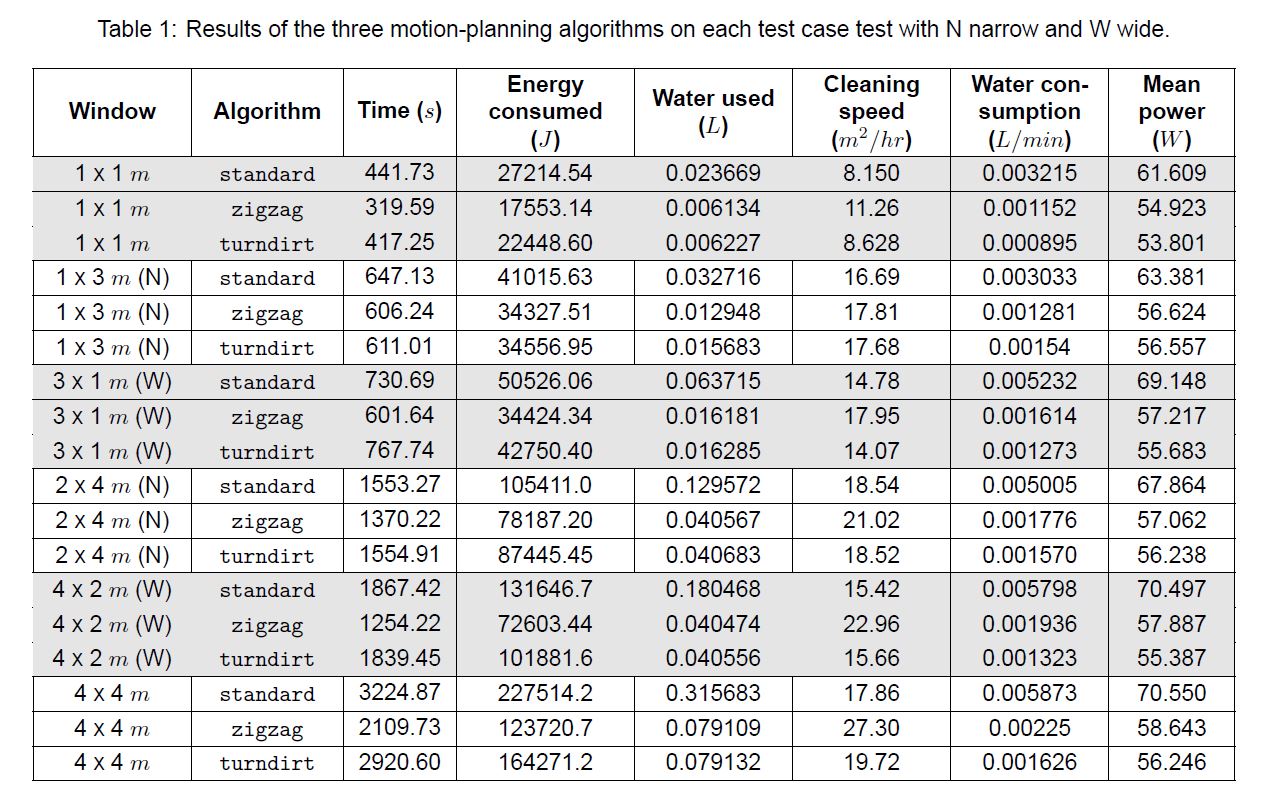Comparison motion planning algorithms
In Table 1, the average results of the model, as well as the calculated performance indicators, are shown for the three different motion-planning algorithms for each test case:

There are a few remarks that can be made based on the results above. First, the zigzag algorithm
has overall performed best on the field of time-efficiency, having spent the least time on
most of the window surfaces. The standard algorithm on the other hand takes on average the
longest time to clean the windows. Despite that the turndirt algorithm is overall faster than the
reference algorithm, there are two situations in which the reference algorithm is faster. This is
the case for a window size of 3 x 1 and 2 x 4 m. Since performance of the turndirt algorithm is
highly dependent on the dirt distribution (it is namely more efficient when persistent spots are in
the center of each row), this could be an explanation for these remarkable results.
If the water consumption is considered, the zigzag and turndirt algorithms yield most of the
cases similar values while the water consumption of the reference algorithm is much higher. When
the window area is more and more increased, the difference between the two developed algorithms
becomes more visible and one can conclude that the zigzag algorithm is slightly better in terms of water consumption. The large difference between the reference algorithm and developed algorithms can be explained by the fact that the standard algorithm continuously uses water,
while the other two algorithms only use water when needed.
The zigzag algorithm is overall the second best in the field of energy-efficiency, just after the
turndirt algorithm. The differences in mean power between these two are very small, while
the difference between the two developed algorithms and the reference algorithm is much larger.
Nevertheless it should be noted that despite the mean power of the turndirt algorithm is overall
slightly lower than the zigzag algorithm, it consumed in each case more energy as can be seen
in the fourth column in Table 1. Thus the mean power of the turndirt algorithm is lower since
the algorithm is slower than the zigzag algorithm.
At last, attention is spent to the window sizes and their influence. As can be seen in Table 1,
the difference in cleaning speed between the zigzag algorithm and both other algorithms is more
significant for wider and bigger windows. This can be explained by the diversity in strategy of
the algorithms. Since the main gain of the developed algorithms lie in their ability to skip already
cleaned surfaces, the difference in performance will become clearer when the rows are longer.
Hence the developed motion planning algorithms will exhibit their benefits especially at larger and
wider windows.